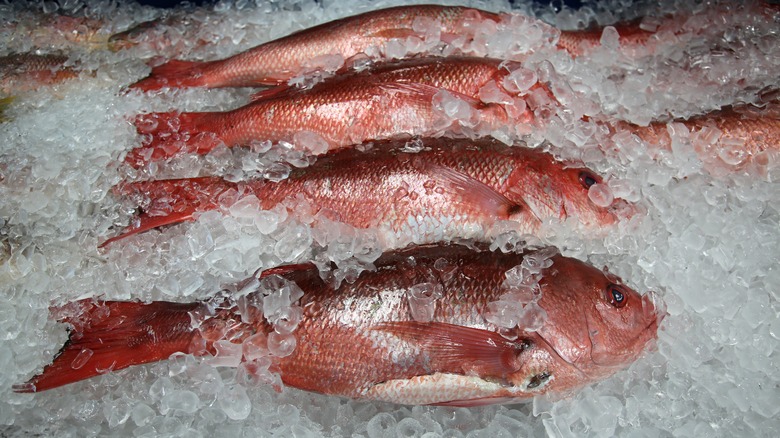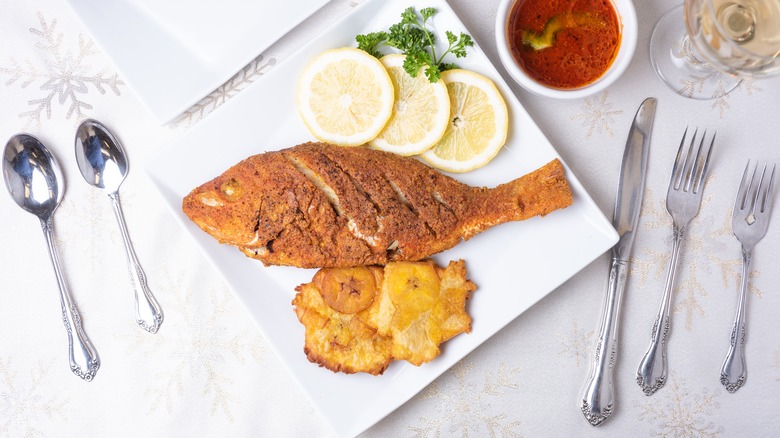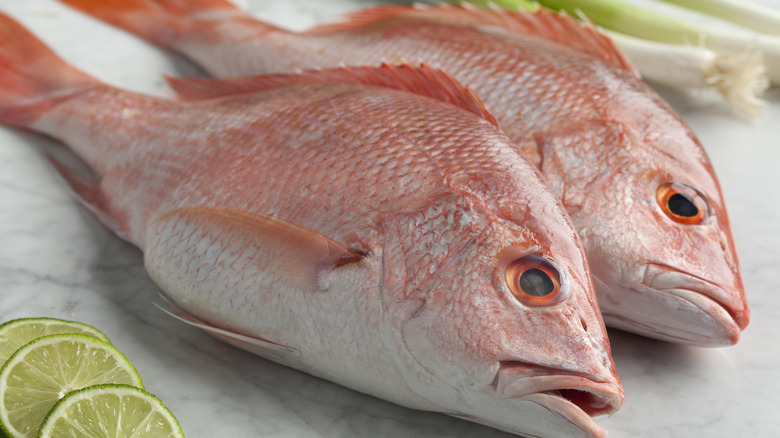The Ins And Outs Of Buying The Best Red Snapper Fish
Red snapper is a delectable white fish that is commonly found in the mid-Atlantic and Caribbean. It has a full flavor that doesn't need a lot of spices or add-ons — cooking it with lemon and fresh herbs will hit the spot. This panko-crusted red snapper recipe is a reliable option, and red snapper also tends to shine in sushi or poke. Once you have a high-quality piece of red snapper, cooking it is pretty simple.
The hardest part about getting red snapper onto your table actually has nothing to do with your kitchen — the difficulty is in the store. If you do not know what to look for, you risk picking out a piece of fish that is either not fresh, not high quality, or not red snapper at all! Fortunately, there are a few key things you can keep an eye out for to make sure you get the best cut of fish possible.
Beware of mislabeling
One of the reasons it is so important to know how to pick out red snapper is because mislabeling is common with this fish. A study of samples collected from grocery stores and restaurants in North Carolina revealed that 90% were mislabeled as red snapper when they were actually another type of white fish, such as vermillion snapper or tilapia. These other fish are not bad — in fact, many of them are delicious. But food fraud can have negative implications, and it is better to know what you are buying.
Why does this happen? It is often because red snapper is a popular fish and labeling things as red snapper can have economic incentives. Plus, this mislabeling can happen anywhere on the supply chain. So when you are picking out red snapper for yourself, it's best to know what to look for. That way, you can not only get red snapper, but the best red snapper available.
What to look for in red snapper
When you are picking out red snapper from the market or the fishmonger, there are a couple of things to keep an eye out for to make sure you pick the highest quality piece possible. First of all, inspect the color. The meat should be white and will often be tinged with a reddish-pink hue. By contrast, the skin should be bright and red, almost fluorescent. Red snapper is best sold with the skin on — the meat is very delicate and the skin will keep it together when you cook it.
If you can, touch the fish. A fresh red snapper will be plump and firm, and if the fish feels mushy, it means it is past its prime. Next, smell it. Red snapper should not smell overly fishy, but rather subtly scented of the ocean. It is common to buy red snapper in either filets or as a whole fish. If you buy a whole fish, you can also look at the eyes as an indicator of freshness: they should be red and not hazy.
Finally, when in doubt, ask a fishmonger or fisherman you trust. They are highly knowledgeable and often the best source of information about fresh seafood!


